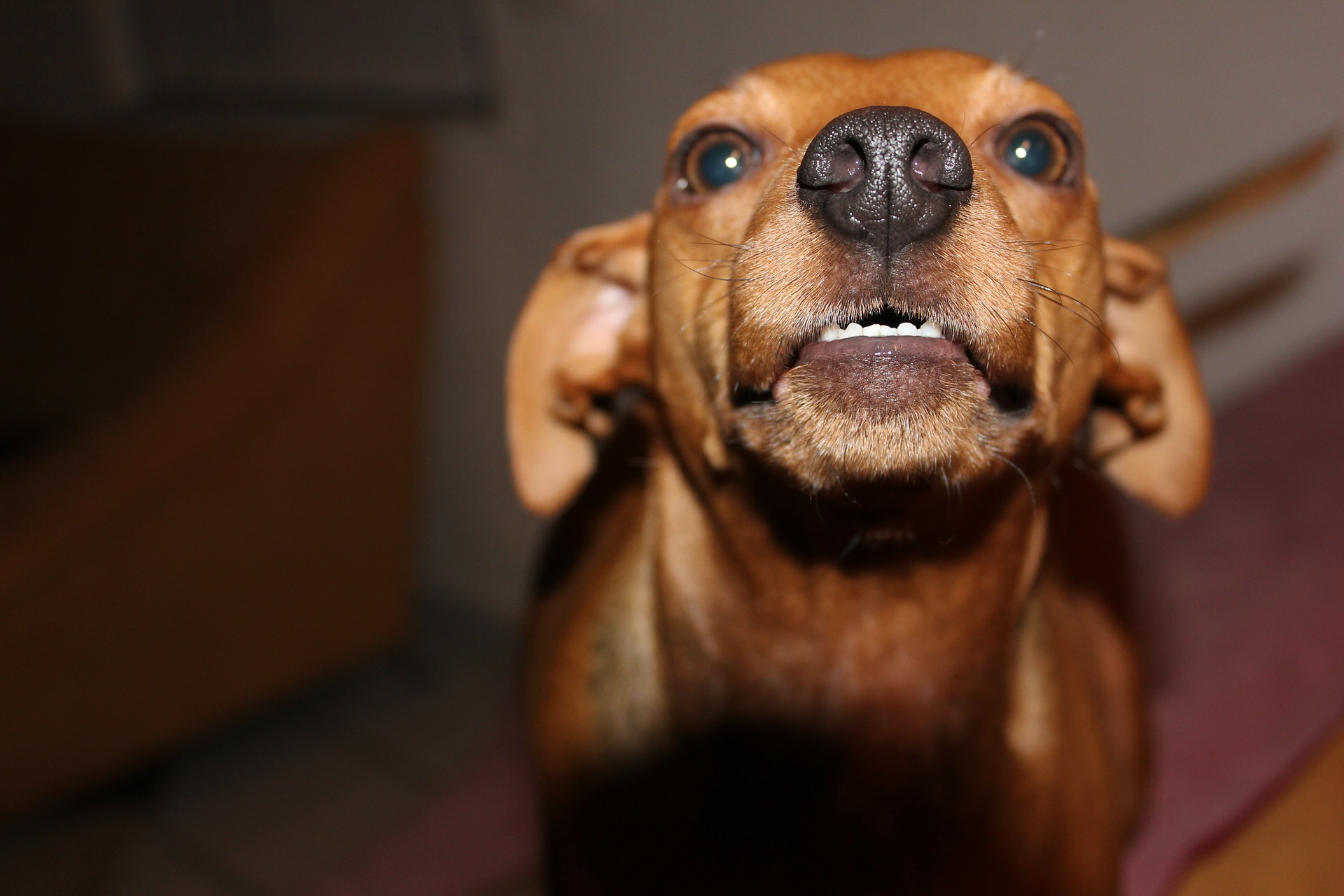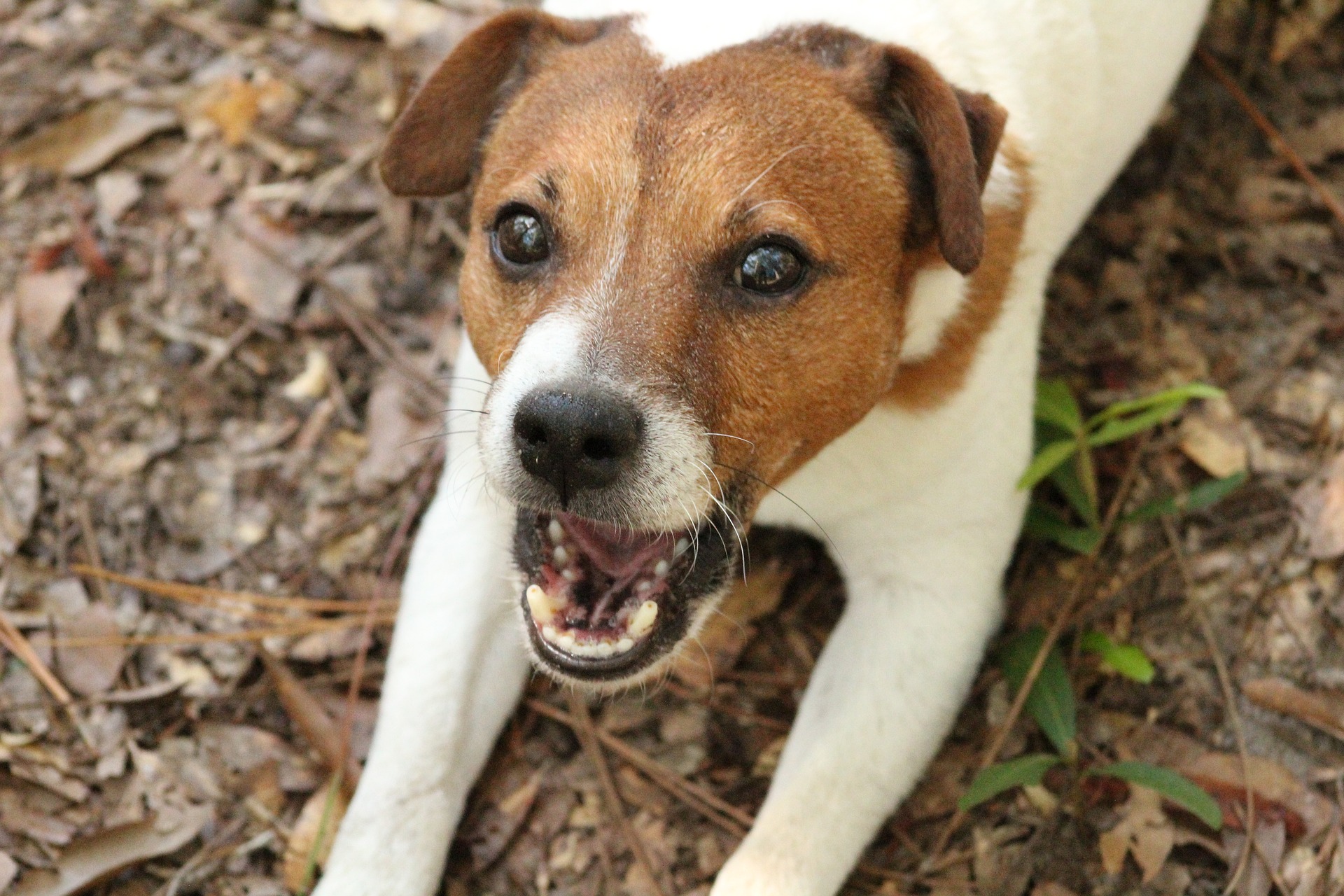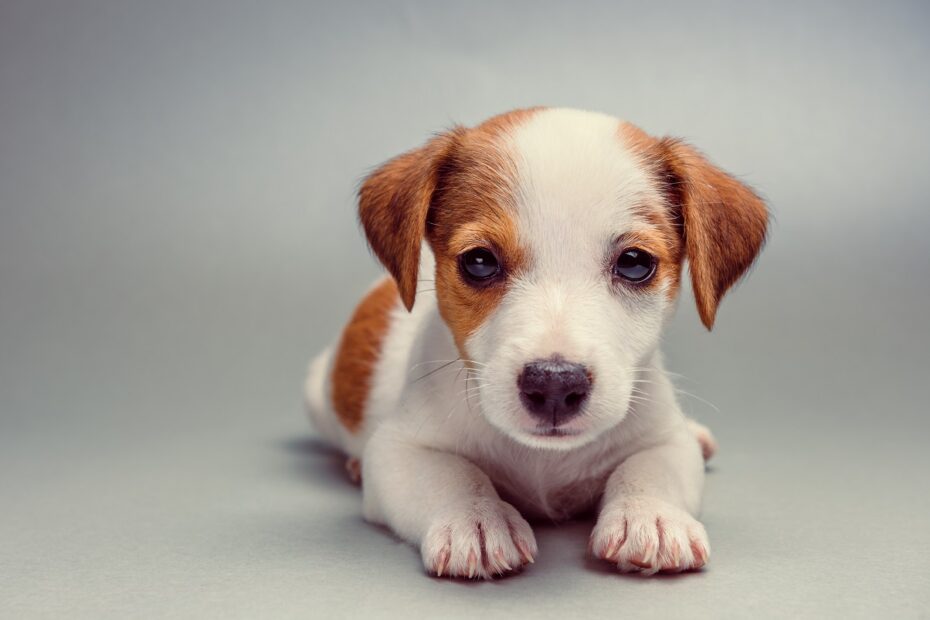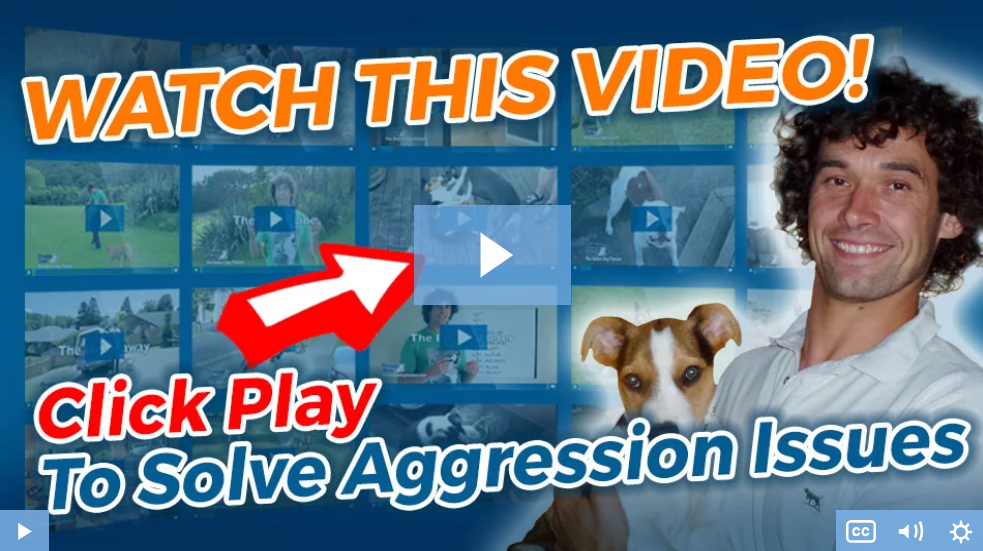If you want to learn how to deal with the ups and downs of training an aggressive puppy I hear you. As do the thousands of other puppy owners dealing with the exact same issue.
It’s perfectly natural to worry about whether you’ve got an aggressive pup on your hands. But the truth is that most unwanted puppy behaviors are all part of the process.
In the vast majority of cases, what looks like aggression is actually perfectly normal puppy behavior. All those little nips and growls are just your pup’s way of communicating.
But here’s the thing…
Just because something is normal doesn’t always mean it’s acceptable… or that it can be allowed to go unchecked.
So if your pup is starting to engage in troubling behaviors, it’s crucial to nip them in the bud as soon as possible.
Now, preventing aggressive behavior like biting can become quite a challenge if you don’t have the know-how to address it correctly.
And this is why before you do anything else, I’d highly recommend checking out the Dog Calming Code from Dan Abdelnoor over at The Online Dog Trainer. (see video below)
During the video, Dan talks specifically about why teaching your pup how to remain calm and in control of their emotions is the missing piece of the puzzle when it comes to dealing with unwanted aggression. Before going on to reveal a simple, highly powerful calming technique that reduces your pup’s natural impulse to bite.
Not only will you find this video helpful if your pup exhibits challenging behaviors like aggression. It’s also a great resource for new dog owners who need a bit of help through the early days.
Here’s the link to take a look: Click Here To Discover How To Finally Stop Your Puppy’s Unwanted Aggression Using A Few Powerful Calming Exercises That Take Minutes To Apply!
(video will open in a new window)
Training An Aggressive Puppy – Common Causes Of Aggression
Sometimes, what looks like aggression is actually perfectly harmless and natural. As with most things, it’s all about ‘context’.
Understand the context of your pup’s behavior, and you’ll have a much easier job of spotting the danger signs and learning when to step in.
If your pup is showing signs of aggression, some of the most common causes include:
Fear
Peel away the aggression in most dogs, and what you’ll find is one very anxious pup.
When a puppy comes across a person, an animal, or a situation that makes them feel scared, their flight or fight response kicks in. If they can, they’ll usually run away and hide. But if that’s not possible, they turn to the other option – fight.
But make no mistake – the ultimate goal here isn’t to dominate or hurt the thing that’s scaring them. They just want it to go away.
And when they learn that biting, growling, or snapping makes that happen, they keep doing it. And thus, a natural reaction becomes an ingrained habit.
Testing Boundaries
Kids aren’t the only ones who go through the troublesome teens. As your pup hits adolescence, they’re going to start pushing boundaries.
Not just because they can, but because they want to find out where in the pecking order they come.
Status-related aggression is natural enough but shouldn’t be allowed to develop unchecked.
Rivalry
If you’ve got a few kids of similar ages, you’ll already be well versed in sibling rivalry. And wouldn’t you know, four-legged youngsters are just as prone to a visit from the green-eyed monster as two-legged ones.
If your pup feels they’re in competition for your time, your affection, or your toys. They’re likely to put on a big enough show to guarantee they’re the center of attention.
Conflict Aggression
Puppies aren’t born with a natural understanding of which behaviors are acceptable and which aren’t. They have to be taught.
Unfortunately, not all of the things we teach them results in a well-behaved, well-adjusted dog… even if it’s rarely intentional.
If you do something your pup doesn’t like (trimming their nails, brushing their teeth, etc.), it’s natural enough for them to give a little growl or snap. After all, at this stage in their life, they don’t necessarily know that such behaviors are ‘bad.’
The problem is, when we back away from the snapping mouth, we’re rewarding the behavior. Your reaction confirmed to your pup that bad behavior works. Without realizing it, you allowed them to dominate the situation and control the outcome.
And once they know they can do that, why would they stop?
Resource Guarding
Pups can get mightily possessive about their food and their toys. It’s not cute, it’s not clever, and it can lead to serious consequences down the line if it’s not nipped in the bud asap.
Territorial Aggression
A dog’s territorial instincts run deep, particularly in certain breeds.
While the intention might be honorable (ultimately, they just want to protect you, your home, and your family) the consequences (biting, snarling, or showing other aggressive behaviors to anyone they deem a threat) are often anything but.
And left unchecked, a territorial pup can quickly become a liability issue.
Predatory Aggression
All puppies have some level of prey drive (i.e. the desire to chase, catch and quite often kill anything smaller, furrier, and more edible than them). Ultimately, it’s not vicious or malicious – it’s simply a survival instinct.
But that doesn’t excuse it. Neither does it mean you can, or should, allow it.
Your pup might not be big enough to be a threat now, but pretty soon, that’s going to change. And once it does, they need to know that targeting small animals or even children is not ok.


How to Tell the Difference Between Aggressive Behavior and Play
Not all behaviors we perceive as aggressive actually are. Pups are playful, and they don’t always play nice.
Nipping at your ankle, tugging your pants, and rabbit -punching their soft toys might look worrying, but most of the time, it’s just part of their fun and games.
The problem is, some of those same behaviors can have a more troubling cause. Learning to recognize the difference between genuine play and actual aggression is crucial if you want to tackle a problem before it develops.
Normal Play
During normal play, your puppy will display certain physical signs that indicate everything’s A-OK. If your pup does any of the following, you can relax:
- Lowers their head to the ground and raises their bottom in a doggy bow.
- Shows you their front and side.
- Keeps a loose, relaxed body posture.
- Wags their tag.
- Issues short, high-pitched barks and growls.
- Spontaneously jumps on another puppy, toy, or person.
- Gives small little barks for attention.
Signs of Aggression
If you want to distinguish between normal behaviors and abnormal ones, watch out for the following signs:
- A direct stare: if your pup stares intently at an animal or person without blinking, it indicates they’re stressed and about to launch into something regrettable.
- Deep, low pitched barking or growling: a high-pitched growl or bark is fine, a low pitched one is not.
- Stiff body posture: if a puppy becomes nervous, their body tends to ‘freeze’, resulting in a tense, stiff posture and a higher chance of aggressive behavior.
- Lip curling: if a pup lifts their lip in a snarl before growling or snapping, they’re feeling very uncomfortable or threatened.
Other than watching out for the physical signs, pay attention to what triggers the behavior. If a puppy nips your hand while it’s playing, there’s nothing to be worried about. If they do it while they’re being handled or if they respond to pain or fear by growling or snapping, take it as a call to action.


How to Stop Your Puppy From Being Aggressive
It’s normal for a puppy to give you a little nip during play. It’s NOT normal for them to bite you during a grooming session.
Dogs don’t become aggressive without reason. Learning to recognize the motivation for your pup’s aggression is the first step.
From there, it’s just a case of figuring out how to curb the unwanted behavior.
Reduce Fear
Most of the time, aggression is born out of fear or a stressful situation.
Unless you’re happy for your pup to become an aggressive, angry dog that people cross the street to avoid, you’re going to need to teach them how to handle stress.
Step 1? …Socialization.
A fear-stricken dog is all too often an under-socialized one. Pups need to learn how to interact with as wide a variety of people and situations as possible, as soon as possible… and they’re not going to do that if they never leave the house.
Get into the habit of taking your pup wherever you go. Take them into places where you know you’re going to run into children, adults, and other pets. The more people they see, the better.
Even though it can go against every natural instinct in your body, don’t mollycoddle them. They’re going to come across loud noises, beeping horns, and crowds of strangers at some point in life – the sooner they get used to it, the better.
The sooner they learn to take scary situations in their stride, the sooner those situations stop being scary and become everyday.
Teach Them Calming Techniques
Pups can get easily overexcited. What starts off as gentle play can all too often descend into roughhousing.
Having a few calming tricks up your sleeve can help de-flame a situation and restore peace. If you need some hints to get you started, I’d highly recommend checking out the Dog Calming Code from the online dog trainer, Doggy Dan.
Use Distraction
Some habits that start as minor can quickly become more serious. While a puppy that play-bites is in no way exhibiting signs of abnormal aggression, excessive biting shouldn’t be encouraged.
Teach your pup that biting isn’t a good thing by using distraction techniques.
As you’re playing with them, keep a toy close by. If they nip at your hand, ball it into a fist to make it harder to chew and waggle the toy in their face. It won’t take too long before they learn the toy makes a much better chew-toy than your hand.
Walk Away
While it’s easy to overlook or even laugh at certain behaviors when you’re dealing with a tiny ball of fluff. It’s not so easy to do the same when you’re dealing with an adult dog.
But unless you teach your pup what is and isn’t acceptable now, those troublesome behaviors aren’t going anywhere.
If they start playing too roughly or if they bite or rush at a child during a game, take away the toy, stop the game, and walk away.
Once they start to connect the dots, they’ll stop engaging in the behaviors that end the fun.


Teach Basic Obedience
A well-trained dog is more likely to follow commands when they behave inappropriately than ones who’ve never been taught the basics.
Although puppies have short attention spans, they’re capable of learning basic commands like “sit,” “down,” and “stay” from about the age of 7-8 weeks.
If your dog shows any signs of resource aggression, make sure to include ‘leave it’ as one of the first commands they learn.
If your pup’s too busy jumping off the ceiling to pay attention to your training, try working the training from the Dog Calming Code into the start of each session. If your pup’s anything like most, they’ll be much more receptive afterward.
Brush Up On Your Leadership Skills
Dogs are pack animals, and all packs have a leader. Teaching your pup who the leader is (and yep, I mean you) is one of the most crucial steps in maintaining order and curbing any unwanted behaviors.
To mark yourself out as a leader, teach them…
There’s no such thing as a free lunch
Caving in to your pup’s demands is easy enough. Who can resist those big brown eyes and that wagging behind?
But if you want to be a leader, you’re going to have to teach your pup to earn their rewards through good behavior and by following your cues.
They’re not the boss
If your pup jumps on you to get attention or engages in any other unsolicited behavior to get what they want, don’t respond.
If they learn they can control your behavior through theirs, they’ll never stop. If they nudge you, whine at you, or nip at your hand as a way of getting you to interact, ignore them.
Put your hands in your pocket, look the other way, and if it doesn’t stop, feel free to leave the room. Once they stop trying to solicit attention, reward them.
Stay Positive
Pups aren’t adults. They’re going to make mistakes, have setbacks, and sometimes, get a bit too enthusiastic in their play fighting for comfort.
But regardless of how frustrating it can get, never resort to punitive or physical punishments as a means of correcting their behavior.
If you do, the only thing you’ll be teaching your pup is to be scared of you- and considering that fear is one of the main underlying reasons for aggression, that’s really not going to be helpful.
Avoid waving your finger in their face, smacking, shouting, or any other technique that isn’t rooted in positive reinforcement.
Wrapping Things Up
As sure as eggs are eggs, pups are going to play. And sometimes, that means the odd nip, tug, and growl.
But when their actions start to push the boundaries of normal, acceptable behavior, it’s time to step in.
A pushy or fearful puppy that learns to lash out when they’re feeling scared, in pain, or threatened is one that needs to be managed.
If aggressive behavior isn’t reshaped while a puppy is still young, it can lead to serious consequences down the line.
That said, it’s important to remember that aggressive behavior rarely indicates an innately aggressive pup. More often than not, it’s a sign of a scared, anxious, or under-socialized one – and those are all things that can be prevented or treated.
With proper training, plenty of socialization, and heaps of encouragement, most pups will very quickly learn what is and isn’t acceptable.
(video will open in a new window)

